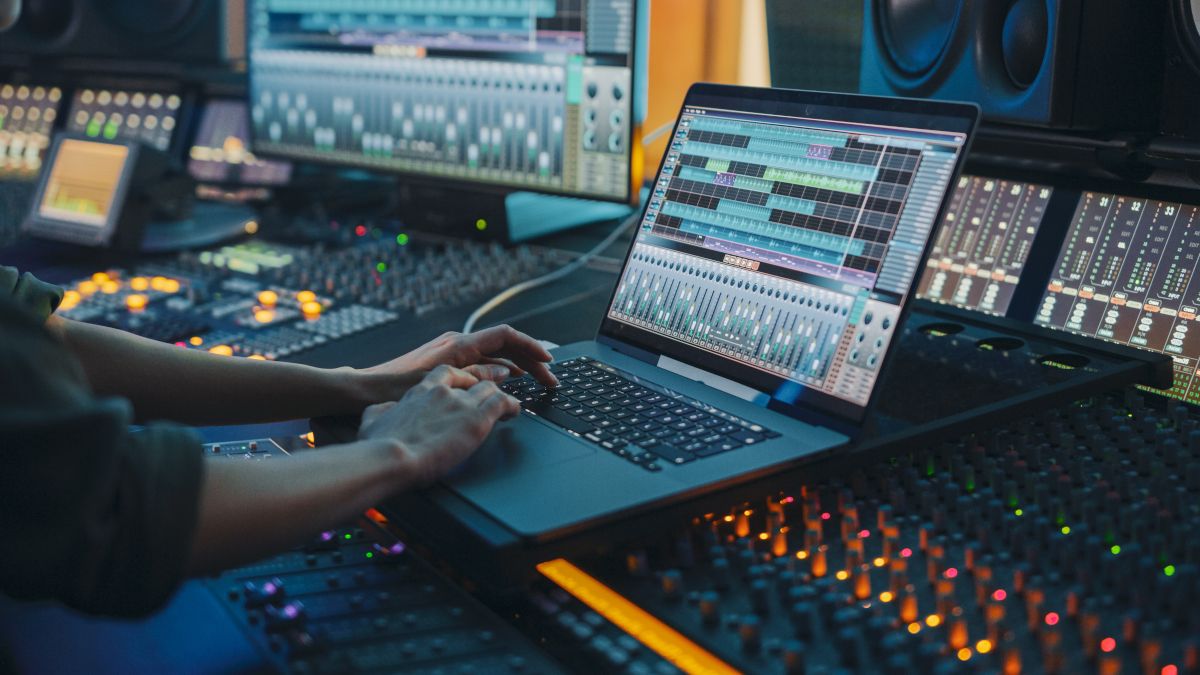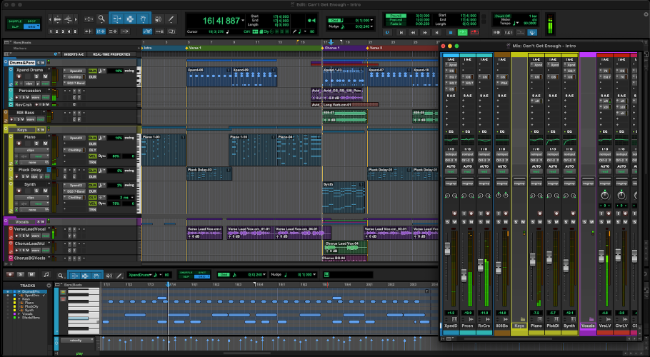Quick Links
Key Takeaways
A digital audio workstation (DAW) is software that lets you record, edit, mix, and master audio on your computer with the same ease as editing a document. Not just for musicians, these powerful tools are useful for creators of all types, as long as it involves audio.
If you've looked into producing music, podcasts, or other audio projects, you've likely heard talk of digital audio workstations. So what are these tools, who are they meant for, and how do you know which one you should use? Let's dive into everything you need to know.
What Are Digital Audio Workstations?
A digital audio workstation (DAW) is a piece of software that essentially recreates the various functions of a studio inside your computer. With DAW software, you can record, edit, and mix multiple channels of audio.
The only thing a digital audio workstation doesn't do is actually get the audio inside of your computer. For that, you'll need an audio interface, which takes the place of a standard computer sound card and adds extra inputs, outputs, and features.
One of the main advantages of a DAW over the analog tape machines of old is that each audio track is displayed as a waveform in the software. This makes it easy to edit audio and fade between various clips. Displaying the waveforms of the audio also lets you easily see if they've been recorded too loudly or too quietly.
Dealing with recorded audio is only one aspect of DAW software. All but the most basic digital audio workstation features support for MIDI (Musical Instrument Digital Interface). This lets you record and play virtual instruments like synthesizers or virtual strings inside of the software. MIDI also lets you control synthesizers and other instruments outside of the DAW.
Who Is DAW Software For?
The first group you think of when you think of a recording studio is the engineers that run it and the producers that make many of decisions. Indeed, walk into any recording studio and you're sure to find a computer running digital audio workstation software. That said, this is far from the only place DAW software is used.
Individual musicians use DAW software all the time. Many musicians eschew the studio entirely these days, recording music on their own and offering it directly over the internet. That said, musicians even use DAW software for performing live.
Of course, musicians aren't the only people creating audio. If you're creating a podcast or audiobook, you'll likely be using a digital audio workstation to record and edit the audio. DAW software is even used heavily in film.
When you think about movies, you probably think about video editing software, but DAW software is used just as much. This ranges from sound design to foley work to virtual instruments used in elements of the score.
The Main Functions of a Digital Audio Workstation
One of the key features of a digital audio workstation is that it can record and play multiple channels (typically known as "tracks" in a DAW) at the same time. This means you can record and play back every instrument in a band or simply the voices of multiple guests on a podcast.
While multitrack recording is perhaps the key feature of a DAW, it isn't the most useful. That would be the editing capabilities. Editing audio in a digital workstation is as easy and powerful as moving text around in a document or editing various layers in a photo editing program like Photoshop.
This isn't limited to audio, either. You can cut, copy, and paste MIDI note data even easier than audio. This means that once you get a performance edited, you can play it through multiple virtual instruments or other devices to get exactly the sound you want.
Once your tracks are edited, it's time to mix them. The basics here include adjusting the volume and equalization of each track as well as its panning to determine where it sits in the stereo image. You can also add other effects to each track like compression to even out a performance or reverb for a sense of space.
Once you've got your mix set, you can export it to a stereo file. From here, you can use the same DAW software to master the recording. This is a complex subject, but basically mastering is making all of the final touches and bringing a track up to the same volume you'd expect to hear on Spotify or another service like Apple Music.
Choosing the Right DAW for You
The industry standard digital audio workstation for professional studios is Avid Pro Tools, but that doesn't mean it's the only one out there. Ableton Live is quickly picking up momentum, especially with producers and musicians thanks to its live performance features.
If you're looking for a free way to start experimenting with DAW software and you use a Mac, iPhone, or iPad, Apple GarageBand is an easy to use and free option. If you find yourself needing more power, it's easy to bring your GarageBand projects into Apple Logic Pro DAW software.
For Windows and Linux, you've got plenty of free options. Audacity is one such tool, and while it's a very basic DAW, it's more than enough for starting a podcast. If you're looking more at music production, Ardour is a free and open-source option.
If you're looking for a mobile option, Steinberg Cubasis, a mobile adaptation of its Cubase DAW, is available for iPhone and iPad as well as Android devices. For more information, take a look at our guide to creating music on iPhone and iPad.


